These completely grain-free, Paleo cassava flour tortillas are pliable, elastic, and won’t crack when filled with toppings! They are perfect for tacos, quesadillas, breakfast burritos, and more!
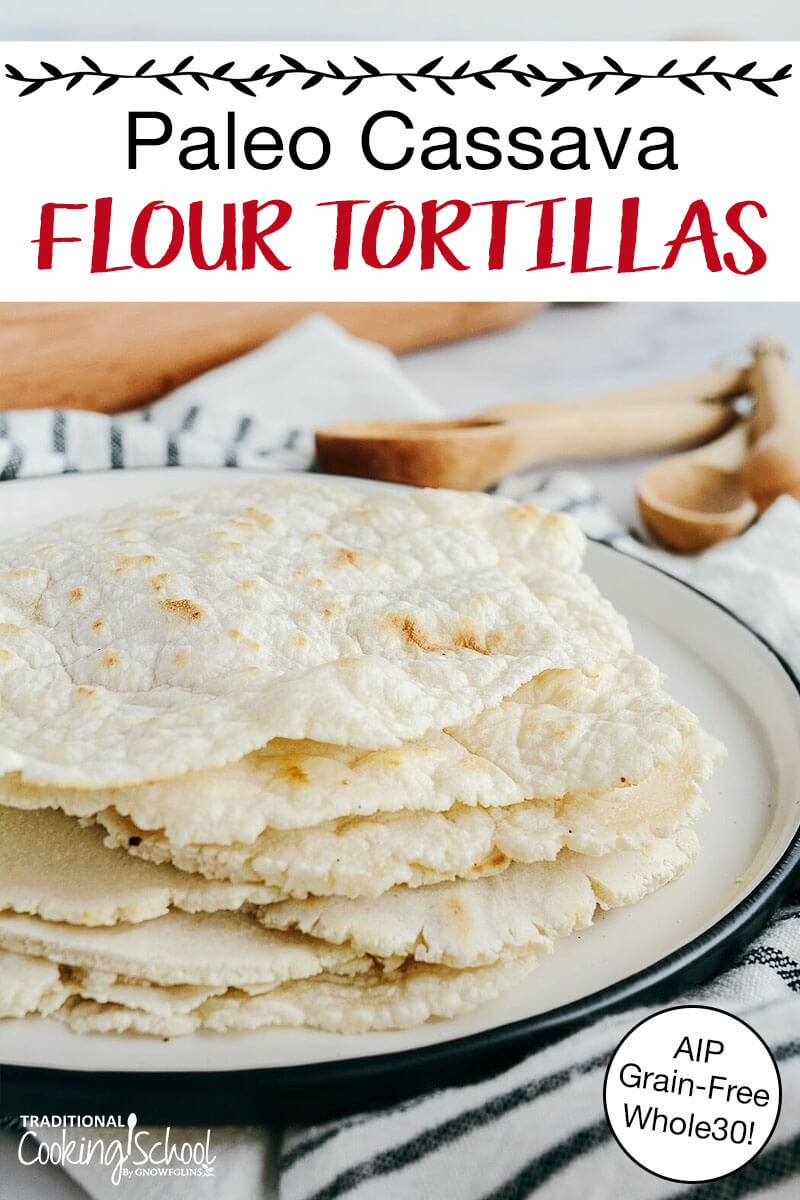
Cassava flour is my favorite grain substitute to date as it makes perfectly pliable, delicious, grain-free, Paleo cassava tortillas.
Cassava flour comes from the root of the starchy yuca plant and provides a stable source of nutrition for millions of people around the world. It is nutrient-dense, gluten-free, grain-free, corn-free and even nut-free, making it an ideal flour for those suffering from allergies or those following a grain-free diet.
The neutral flavor of cassava lends itself well to forming delicious but not overpowering Paleo cassava tortillas. Its taste and texture satisfy much like normal bread, without detracting from the rest of the dish like some grain alternatives can.
Cassava tortillas are pliable and elastic and don’t crack or pull apart when filled with toppings. They act much in the same way that soft corn tortillas or your typical flour tortillas do.
And dare I say, to me, taste far better than either.
If you’ve never worked with cassava flour, you’ll find it to be much finer than most flours as the granule is fine and soft. And when combined with water and oil, the dough handles beautifully and rolls easily without breaking apart.
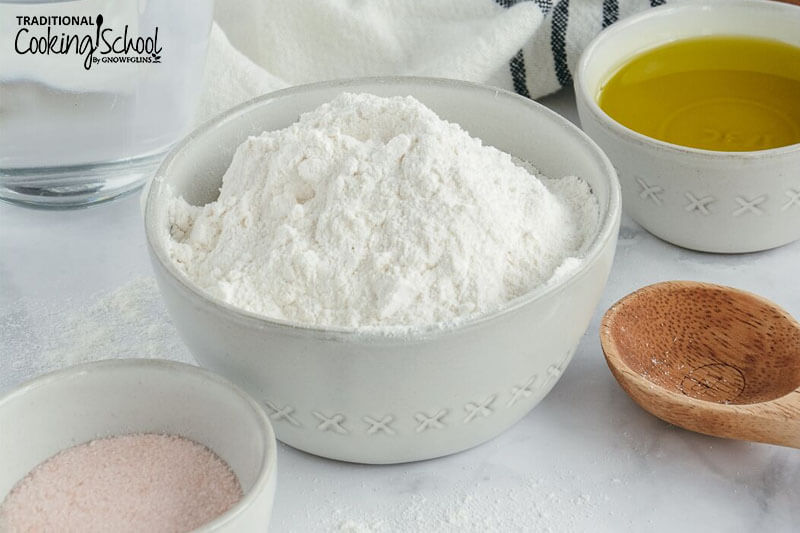
So let’s talk a little bit about cassava flour and how to make perfect Paleo cassava tortillas every time!
Paleo Cassava Flour Tortillas are…
- gluten-free
- grain-free
- corn-free
- dairy-free
- vegan
- Whole30-compliant
- nut-free
- egg free
- Paleo-friendly
- AIP-compliant
- Low Vitamin A-compliant
- easy to make and delicious!
What’s the difference between cassava flour and tapioca flour?
A lot of people (myself included) for a long time assumed that cassava and tapioca flours were interchangeable but that’s not the case at all.
While both flours come from the yuca plant, cassava flour is made from the whole root while tapioca is made of only the starchy part.
Cassava flour will often give food a more glutenous texture where tapioca will not. This is why cassava flour is the ideal candidate for gluten-free tortillas.
Tapioca acts as a great thickener for soups and stews.
Where can you find cassava flour?
While coconut, almond, and tapioca flours are readily available in most grocery stores, cassava flour is a bit harder to come by.
Grocery stores like Whole Foods and Trader Joe’s carry cassava flour but if yours does not, a good option is to shop online. My favorite brand is Otto’s Cassava Flour.
Cassava flour is more expensive than most alternative flours but in my opinion, it is worth every penny as the results are always impeccable. And if you want the true taste and texture of a tasty tortilla (yet gluten-free), cassava flour is the way to go.
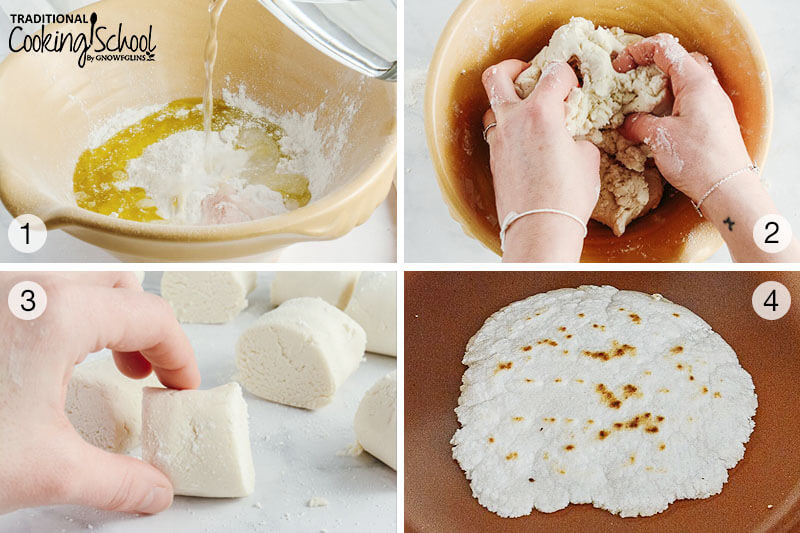
What do you need to make cassava flour tortillas?
The beauty of this recipe is that it requires just 4 ingredients: cassava flour, water, olive oil, and sea salt.
You will also need a good cast iron skillet and either wax or parchment paper.
If you don’t have wax paper, I highly recommend you get some before embarking on the Paleo cassava tortilla journey. Otherwise, yours will be a sticky mess… unless you have an electric tortilla press!
But if you don’t, rolling out the dough between two pieces of parchment paper makes life much easier and you don’t have to worry about peeling bits off your rolling pin or your counter.
Are cassava flour tortillas grain-free?
Yes! If you’re new to the term Paleo, don’t worry, you’re not alone. The Paleo diet is generally grain-free so you can be certain that these cassava tortillas are entirely free of gluten and grains.
How do you store cassava flour tortillas?
You’ll notice that cassava tortillas are best when served right away.
If you have leftovers, store them in an airtight container or bag and refrigerate.
To reheat the grain-free tortillas, just add them to a dry heated pan and they’ll soften up again.
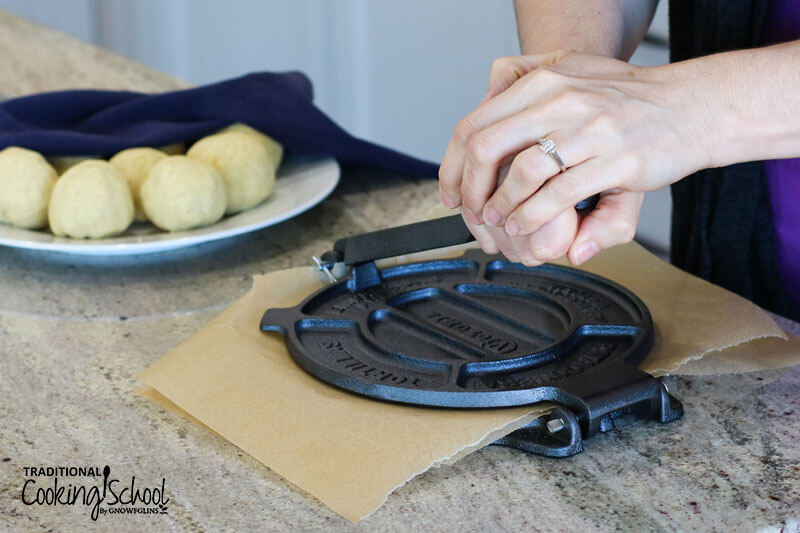
Can you use a tortilla press?
If you have a tortilla press, your work will be greatly reduced (though, truthfully, I find the whole process rather relaxing and meditative).
There are a few options for a tortillas press. You can use the same method of placing your dough between two pieces of wax paper, press, and follow the same steps for cooking (method pictured above with these corn tortillas).
Or, if you have an electric tortilla press, just follow manufacturer instructions once you’ve made your dough.
What is the best skillet for making cassava flour tortillas?
In my opinion, a dry cast-iron skillet or dry non-stick ceramic skillet will be your best option for getting the results you want.
It’s important not to add any oil at all to the pan as this will change the consistency of the tortilla and you’ll end up with a tostada (a fried piece of tortilla) and won’t get a pliable texture.
Recipe ideas for cassava flour tortillas:
As far as recipe ideas, you can get as creative as you want! I often use cassava tortillas when making pulled pork or chicken tacos, fish or beef tacos.
You could use them to make a breakfast roll-up with eggs, bacon, and your favorite fillings.
If you want to turn them into a sweet treat, consider adding some homemade Nutella, bananas, and cinnamon.
Let me know what your favorite cassava flour tortilla recipes are!
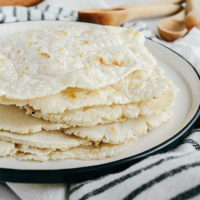
Paleo Cassava Flour Tortillas
Cassava flour is my favorite grain substitute to date... So far, I've made cassava flour tortillas for tacos, which are pliable, elastic, and don't tend to crack when filled with toppings!
Ingredients
- 2 1/4 cups cassava flour
- 1 teaspoon sea salt
- 6 tablespoons extra virgin olive oil
- 1 to 2 cups pure water
Instructions
-
Combine flour, salt, and olive oil in a large bowl.
-
Add 1 1/2 cups water.
-
Mix until evenly distributed, and oil and water are absorbed.
-
Knead, adding enough additional water for the dough to hold together without crumbling. Make sure the water is being worked to the inside of the dough mass.
-
Take a small portion of the dough, roughly egg-sized, and place it between 2 sheets of parchment paper.
-
With a rolling pin on the top layer of parchment paper, roll out the tortilla to about an 1/8" thick and a diameter that will fit inside your 10" or larger cast iron skillet (mentioned below).
-
As you're rolling out, smooth out any ridges that appear along the edges.
-
Remove the top layer of parchment paper. The tortilla may stick, so roll back gently to prevent tearing.
-
Heat a dry 10" or larger cast-iron skillet to medium-low heat.
-
Transfer tortilla from the bottom layer of parchment paper into the middle of the skillet. I lay the tortilla face-down on the palm of my dominant hand, then to prevent tearing, carefully peel back the parchment paper, starting from the thickest edge of the tortilla.
-
Once tortilla is in the skillet, watch for the edges of the tortilla to curl up, and bubbles to form in the dough. Then it's ready to be flipped!
-
Once you see bubbles and the underside is browned, flip the tortilla.
-
After the second side is lightly browned, remove tortilla from skillet. Undercook rather than overcook -- this is the key to soft tortillas.
-
Place inside towel or container to keep warm.
-
Repeat for all tortillas, adjusting the heat up or down as necessary so they don't get overcooked or burned.
-
While still warm, put the stack of tortillas, sandwiched between 2 layers of parchment paper, inside a zipper-seal bag. This helps to keep them soft.
-
Serve with taco meat and toppings, or any other fillings your heart desires. 🙂 Enjoy!
Recipe Notes
Refrigerate leftovers. When chilled completely, any that are overcooked may become hard or brittle, but they are easily softened up by heating them in a dry skillet.
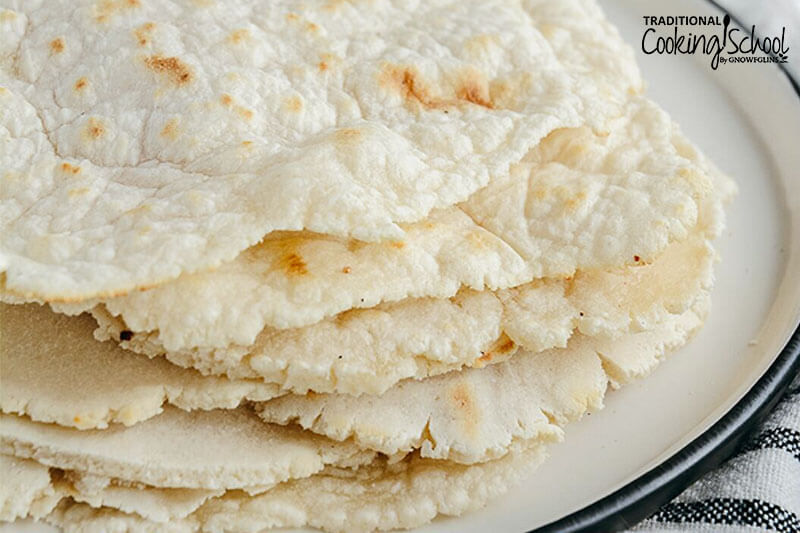
Have you used cassava flour in your kitchen? Will you try these cassava flour tortillas? Have you ever made paleo tortillas?
This post was featured in 60 Easy & Nourishing Picnic Recipes.
Other Grain-Free Recipes
- How To Make No-Fail Caulitatoes
- Cauliflower Pizza Crust Recipe
- Grain-Free Paleo Sourdough Bread
- Best Keto Dinner Rolls (Low-Carb, Dairy-Free, Grain-Free)
- Probiotic Cauliflower Potato Salad (Low Carb, THM:S, Egg-Free)
- Easy Cheesy Cauliflower Casserole
This post was originally published and written by Naomi Harmon on 12/19/16. It was updated and republished on 1/21/20.
We only recommend products and services we wholeheartedly endorse. This post may contain special links through which we earn a small commission if you make a purchase (though your price is the same).


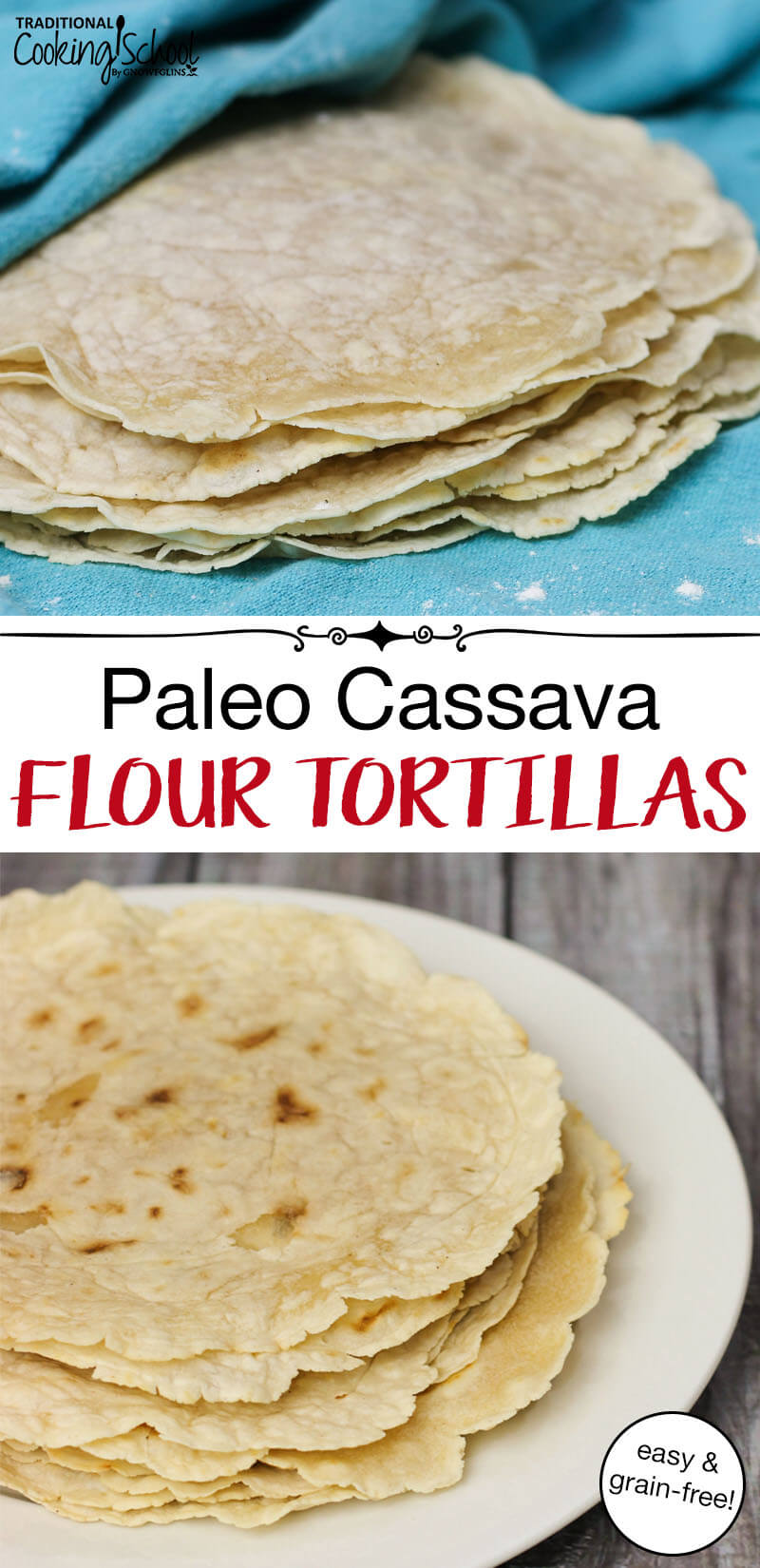
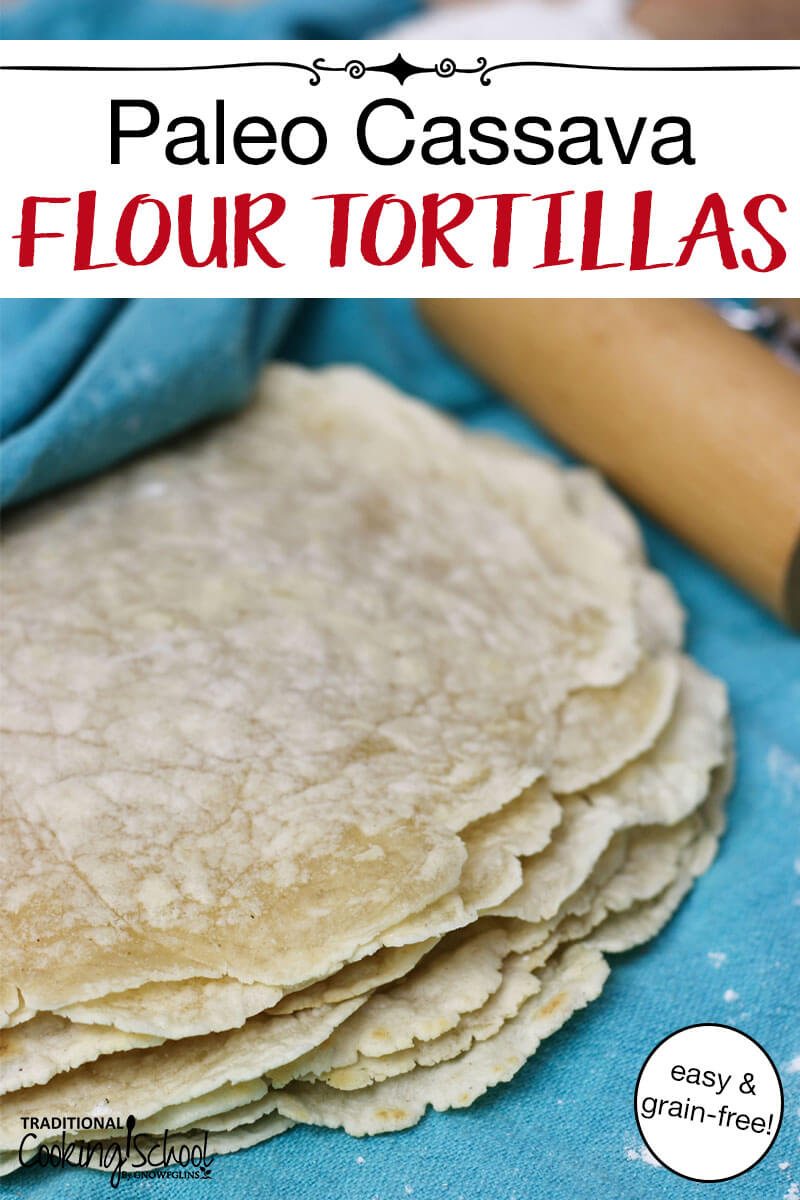
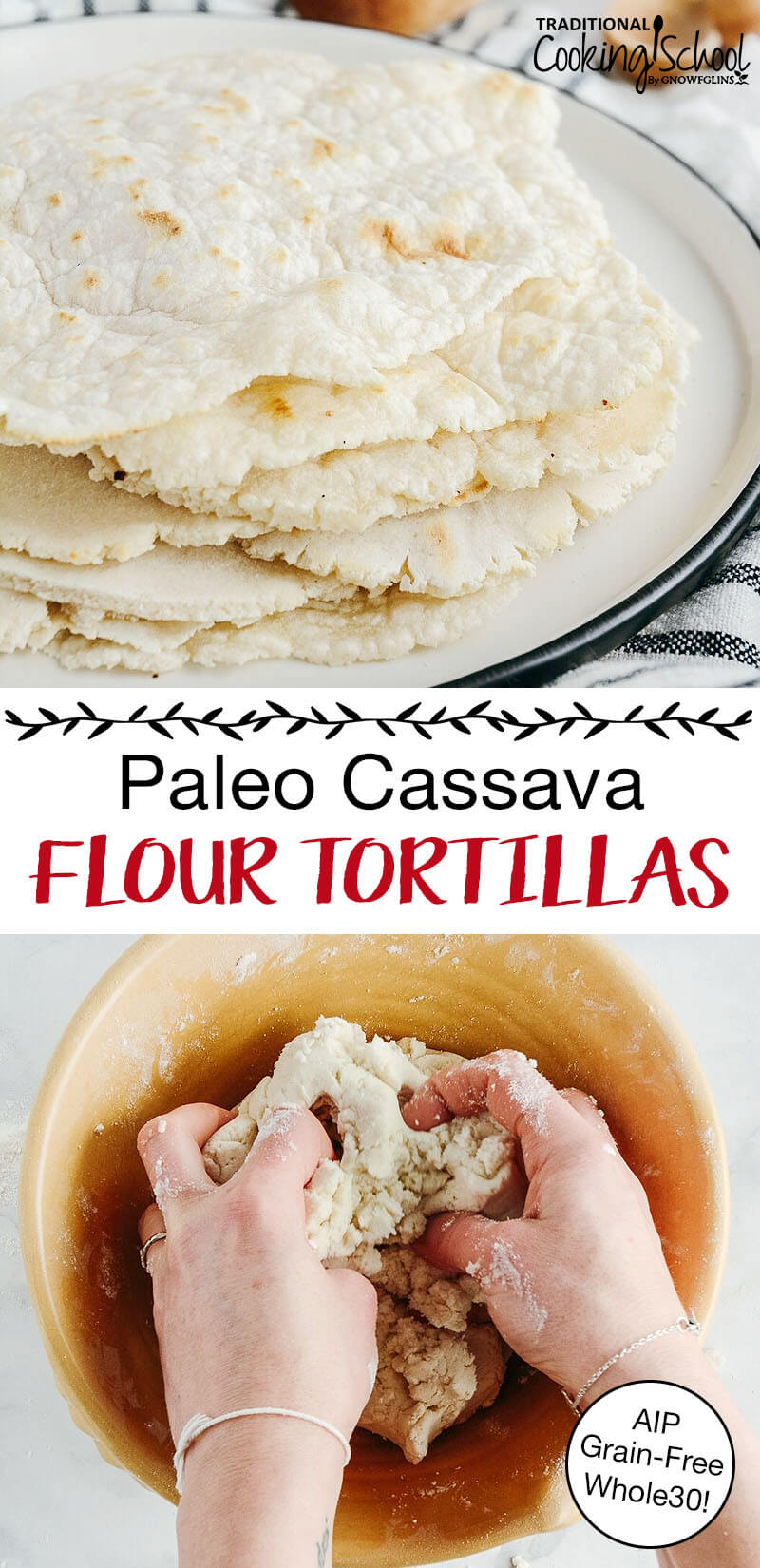
What is the carbohydrate content of these tortillas or of cassava flour in general?
Janet, that was my first questions as well since I’m a Type 2 diabetic. I looked up the nutritional content of cassava flour, and it’s 78 grams of carbohydrates per cup (cornmeal is 125). So this recipe would have 12.5 grams of carbohydrate each if making 14 tortillas and just over 14.5 if making 12, which is probably what I would aim for (just seems easier to portion 12). Actually, I’d probably halve the recipe if I was planning to use only for tacos or sandwich wraps, and if I make a full recipe, it would be better to plan on freezing half of them as filled burritos or enchiladas. And it would be interesting to see how they fare if baking or frying them to make tortilla chips.
Thanks! I’m pre-diabetic and this was also my first question when I saw this recipe.
Do these freeze well?
Where can you get organic cassava flour? Pretty exotic for a region that does not grown them
I have made cassava tortillas with a very similar recipe and they are great. I think they are best when fresh, so I make a very small batch. Worth getting a tortilla press for.
I have a tapioca sensitivity. Do you know if I can eat these?
I tried this recipe today. What a disappointment! The dough came together easily enough – but apart from the complete inability to remain cohesive, it turned into an inedible plank in the pan- the one tortilla I manage to lever out intact. Thinking I should perhaps add a bit more water, (I had only added one cup to this point,) it then stuck sullenly to the bottom of my non-stick pan and shredded off! What an enormous waste of money and time!
I had the same thing happen today. And what I did was lightly oil the pan in between each tortilla. I was lucky enough to have duck fat, and used that. Typically I’d use lard or tallow, which I always have on hand. Since it is a lower heat setting, olive oil would work too. I think that using a small bit of oil (like a very full 1/2 teaspoon) made it so that I didn’t get the air bubbles. My tortillas also look very different in color and I don’t know that they would fold over well or be able to be used as a wrap. I still had only about 3/4 of the rest of the batch in what would be a full tortilla. Some still cracked. Don’t know if I’m up to trying tortillas again. I had also tried making a Cassava flour brownie recipe and they were ready several minutes before the minimum time frame given in the recipe. They had good flavor, but were dry and chalky. I will say that Cassava flour (and arrowroot) make a nice and sturdy pizza crust though.
My favorite thing to do with cassava flour is to make Brazilian style tapioca with it (called beijus in Bahia). You take the tapioca flour, put it in water, enjoy watching a non-newtonian solid for a while. Then, drain off the water and put out on towels to dry as a solid. Once a nice solid, throw in the food processor to turn into grains (think a really chunky sea salt). That can be stored in an airtight container for a week or more. To use take about 1/2 cup and sprinkle it evenly into the bottom of a super-hot pan (about 6-7″). Then, you can put your toppings of choice on top — the Brazilians use both savory and sweet. Some favorites are nutella and banana (wtih or without flaked coconut), anything with condensed milk, jelly and soft cheese. For savory they do a lot with soft cheeses and meats (shredded beef or chicken). At home I do a lot with provolone and ham or turkey (or both).
How long do you leave the water on the flour? Also can this be baked and used as a pizza crust? Thank you
The recipe on the bag of “Otto’s” cassava flour is the best. I add a little extra salt and some pepper to the dough for added flavor. I heat up 2 “heavy” non stick pans while I mix up the dough. I press the tortillas (not too thick) with parchment on both sides. Peel one side and put the parchment back on, flip it and peel the parchment off the other side. This way when the pan is ready you can easily flip the tortilla into your hand and then into the pan. This way I’m pressing the tortillas as the first ones are cooking.
Hints: 1. Get a very flat tortilla press that doesn’t have raised edges.
2.I weigh my cassava flour for consistency then I weigh the dough so I can divide it into equal sections by weight and roll them in a ball to make the correct number of tortillas that are all the same size. Since the dough is not sticky I can toss these balls on top of each other into the bowl I used to mix it in the first place, then just grab them while I’m pressing.
3:When I’m watching TV I cut out a lot of parchment circles and store in a gallon Zip Loc bag.
Sounds like a lot of instructions but once you’ve done these a few times it goes fast.
I had the same trouble as some of the commenters. I added more water. I also placed a little olive oil between tortilla in pan. It did not cook up the way it was shown. It just created a mess. The taste was excellent, but it could not be rolled up. I eventually looked up cassava flour using your link. I noticed it has a tortilla recipe on the back of package. Even accounting for the different number of tortillas between the two recipes, the proportions were different among the ingredients. I wonder if this accounted for the huge mess I made trying to follow the recipe on this site. Please investigate.I’m the third or fourth person who had the same major problem. Thanks for your time and attention.